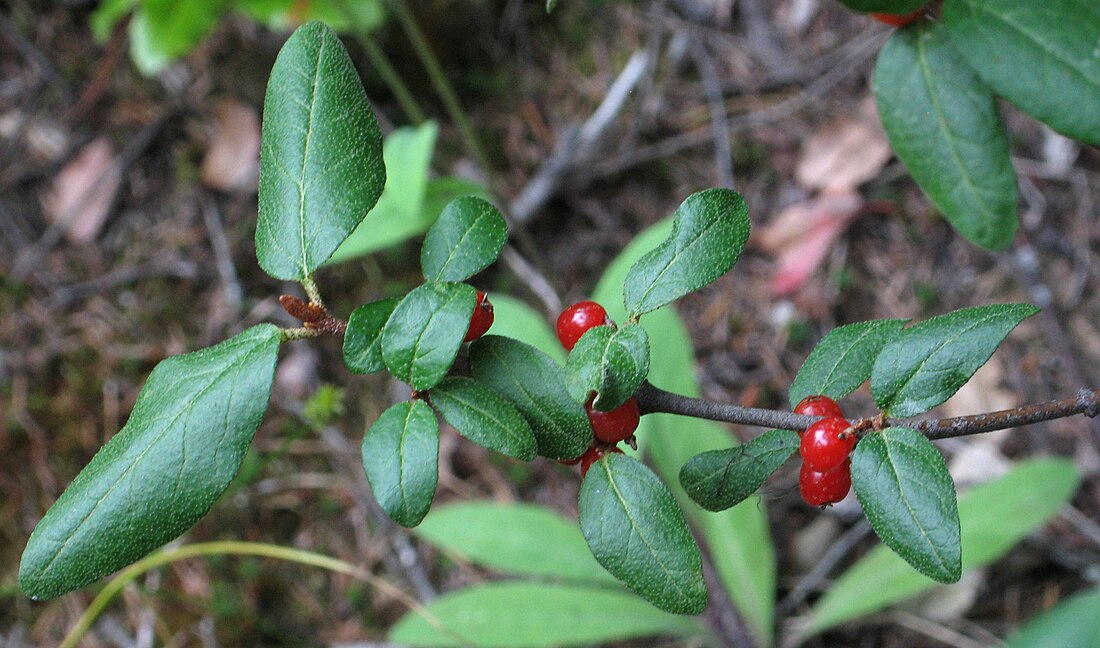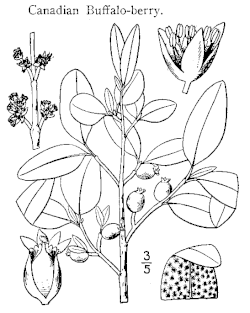Top Qs
Timeline
Chat
Perspective
Shepherdia canadensis
North American species of buffaloberry From Wikipedia, the free encyclopedia
Remove ads
Shepherdia canadensis, commonly called Canada buffaloberry, russet buffaloberry,[3] soopolallie, soapberry, or foamberry (Ktunaxa: kupaʔtiⱡ)[4] is one of a small number of shrubs of the genus Shepherdia that bears edible berries.
Remove ads
Description
The plant is a deciduous shrub, growing to a maximum of 1–4 metres (3+1⁄2–13 feet).[5] The leaves are 6.5 centimetres (2+1⁄2 in) long, green above, and whitish and brownish below. The fruit is usually red,[5] but one variety has yellow berries.[citation needed] The berries have a bitter taste.[5]
It is a non-legume nitrogen fixer.[6]
- Drawing by Nathaniel Lord Britton (1913)
- Leaves
- Staminate flowers
- Pistillate flowers
- Berries
- Close-up of berries
Remove ads
Etymology
The common name of the plant in British Columbia is "soopolallie", a word derived from the historic Chinook Jargon trading language spoken in the North American Pacific Northwest in the 19th and early 20th centuries. The name is a composite of the Chinook words "soop" (soap) and "olallie" (berry).[7][ISBN missing]
Distribution and habitat
The species is widespread in all of Canada, except in Prince Edward Island, and in the western and northern United States, including Alaska[8] and Idaho.[9]
It grows in openings and forest understories.[5]
Uses
The fruit is edible,[5] but the saponin chemicals it contains may cause gastrointestinal irritation if large quantities are consumed.[citation needed] Unrelated plants in the genus Sapindus, also commonly denominated "soapberry," produce toxic saponins.[10]
Some Canadian First Nations peoples such as Nlaka'pamux (Thompson), St'at'imc (Lillooet), and Secwepemc (Shuswap) in the Province of British Columbia extensively collect the berries. The bitter berries (which may be sweetened by frosts)[11] are processed with other berries as Indian ice cream.[citation needed] The saponins create a foam when the berry is whipped into a dessert dish.[11] First Nations peoples believe that the berry has many health properties. Native-themed restaurants in British Columbia have occasionally offered the berries on their menus.[7][ISBN missing]
Remove ads
References
External links
Wikiwand - on
Seamless Wikipedia browsing. On steroids.
Remove ads








